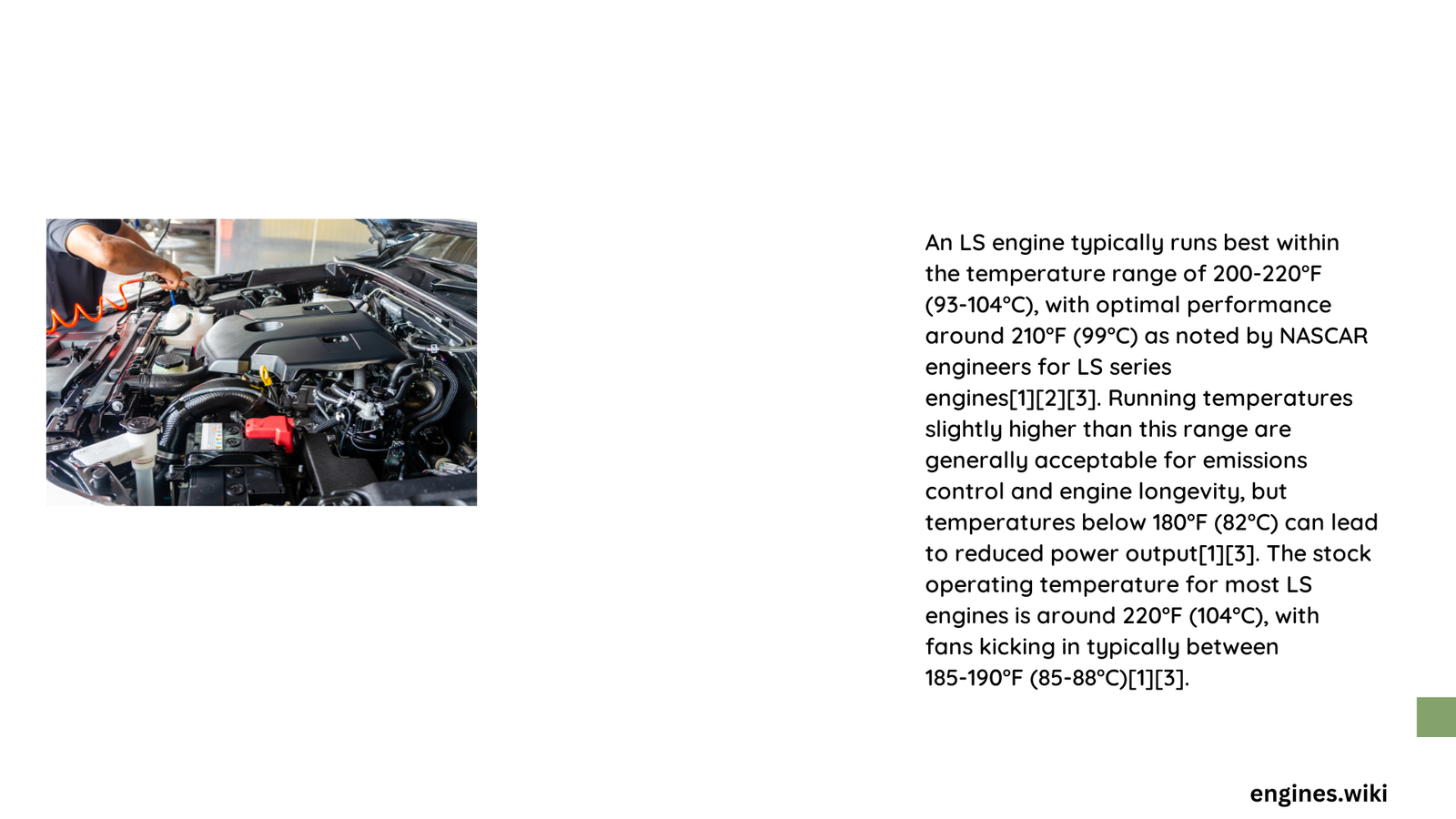Understanding the precise temperature range for an LS engine is crucial for maintaining peak performance and preventing potential mechanical issues. LS engines, renowned for their robust design and versatility, operate within a specific thermal envelope that balances efficiency, power output, and long-term reliability. Factors such as thermostat settings, environmental conditions, and engine load significantly influence the optimal running temperature.
What Is the Standard Operating Temperature for LS Engines?
The standard operating temperature for most LS engines typically ranges between 190°F to 210°F (88°C to 99°C). This range represents the sweet spot where the engine performs most efficiently while minimizing wear and maintaining optimal thermal dynamics.
Key Temperature Ranges
| Condition | Temperature Range | Notes |
|---|---|---|
| Normal Driving | 190-200°F (88-93°C) | Ideal operating condition |
| Hot Weather/Heavy Load | 210-220°F (99-104°C) | Acceptable but approaching thermal stress |
| Extreme Conditions | Up to 232°F (111°C) | Short-term tolerance only |
Why Does Temperature Matter for LS Engines?

Temperature plays a critical role in engine performance for several reasons:
- Thermal Efficiency: Proper temperature ensures optimal fuel combustion
- Mechanical Wear: Prevents excessive expansion and contraction of engine components
- Lubrication Performance: Maintains ideal oil viscosity and flow characteristics
How Do Thermostats Impact Engine Temperature?
Stock LS engines typically come with a 185°F (85°C) thermostat, but performance enthusiasts often experiment with alternative settings:
- 180°F (82°C) Thermostat
- Provides slightly cooler operation
- May reduce potential heat-related stress
-
Potential minor reduction in overall efficiency
-
190°F (88°C) Thermostat
- Closer to manufacturer’s recommended setting
- Balances performance and thermal management
- Preferred for most street and mild performance applications
What Factors Influence LS Engine Temperature?
Several critical factors can impact engine temperature:
- Ambient Temperature: External weather conditions
- Vehicle Load: Acceleration, towing, or high-performance driving
- Cooling System Efficiency: Radiator condition, coolant quality, and fan performance
- Modifications: Aftermarket components and tuning
Can You Modify LS Engine Cooling?
Performance enthusiasts have multiple options for managing engine temperature:
- High-Performance Radiators: Improved heat dissipation
- Electric Fan Upgrades: More precise temperature control
- Coolant Additives: Enhanced thermal transfer properties
- Thermostat Selection: Fine-tuning temperature range
Warning Signs of Temperature Issues
Potential indicators of temperature-related problems include:
- Consistent temperature readings above 220°F
- Rapid temperature fluctuations
- Steam from the cooling system
- Reduced engine performance
- Unusual coolant consumption
Recommended Maintenance Practices
To maintain optimal LS engine temperature:
- Regular coolant system inspections
- Use high-quality coolant
- Check thermostat functionality
- Maintain proper coolant levels
- Inspect radiator and cooling fans periodically
Professional Recommendations
Most automotive experts recommend:
– Keeping engine temperature between 190-210°F
– Using manufacturer-recommended coolant
– Avoiding prolonged operation at extreme temperatures
Pro Tip: Always consult with a professional mechanic or performance specialist for personalized advice tailored to your specific LS engine configuration.
Reference:
– LS1 Technical Forums
– Corvette Performance Community
– LS Engine Technical Resources
